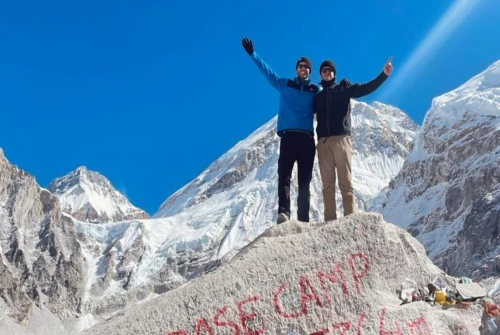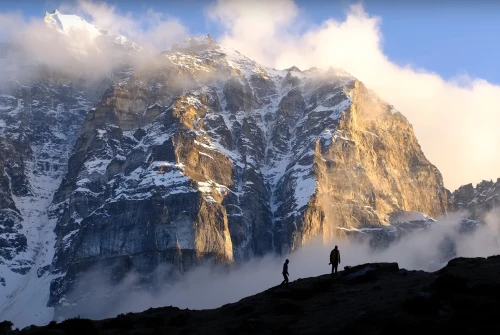Everest Base Camp Trek
The Everest Base Camp Trek (EBC) is Nepal’s most iconic and celebrated trekking route often considered a bucket-list adventure for hikers around the globe. Nestled deep in the Khumbu region, this legendary trail allows you to walk in the footsteps of mountaineering legends and stand at the foot of the world's highest peak, Mount Everest (8,848 m).
The journey begins with a thrilling mountain flight from Kathmandu to Lukla, followed by a steady ascent through alpine forests, suspension bridges, glacial rivers, and traditional Sherpa villages. You’ll pass through key stops like Phakding, Namche Bazaar, Tengboche, Dingboche, and Lobuche, each offering rich cultural encounters and increasingly stunning Himalayan views.
At Namche Bazaar, the main acclimatization stop, trekkers can explore local markets, bakeries, and museums, or take short hikes to Everest viewpoints. Higher up, a visit to Tengboche Monastery, the largest in the region, offers peaceful insight into Tibetan Buddhist traditions, with Ama Dablam towering behind the gompa.
The climax of the trek is the hike to Everest Base Camp (5,364 m), where climbers prepare for summit bids. While Everest’s peak isn’t visible from base camp itself, the pre-dawn hike to Kala Patthar (5,555 m) the following morning reveals panoramic views of Everest, Lhotse, Nuptse, Pumori, and the Khumbu Glacier a moment that stays with trekkers forever.
Trek Facts:
- Duration: 12–14 days (standard)
- Max Altitude: 5,555 m (Kala Patthar)
- Difficulty: Moderate to Challenging
- Trek Type: Tea house / lodge-based
- Required Permits: Sagarmatha National Park Permit + Khumbu Pasang Lhamu Permit
Highlights:
- Scenic flight into Lukla
- Hike through Sagarmatha National Park, a UNESCO World Heritage Site
- Immersion in Sherpa culture and village life
- Visit to historic Tengboche Monastery
- Unforgettable sunrise from Kala Patthar
- Close-up views of Mount Everest and neighboring giants
Altitude Tips:Due to the elevation, acclimatization days in Namche and Dingboche are essential to avoid altitude sickness. Trekkers are encouraged to go slowly, drink plenty of water, and follow their guide’s instructions.
Best Time to Trek:
- Spring (March–May): Blooming rhododendrons, mild weather, clear views
- Autumn (September–November): Stable weather, crisp skies, excellent visibility
Responsible Trekking:The Everest Base Camp Trek trail passes through environmentally sensitive zones. Support eco-friendly lodges, avoid plastic, and carry reusable bottles. Respect the local culture and wildlife of Sagarmatha National Park.
Optional Add-ons:
- Extend to the Gokyo Lakes trek for glacial lakes and Gokyo Ri views
- Add the Three Passes Trek for a more challenging loop with extra high passes
- Combine with a helicopter ride back to Kathmandu for a luxury finish
The Everest Base Camp Trek is more than a physical journey, it's a transformative experience. From ancient monasteries to glacial landscapes and the raw power of the Himalayas, this trek captures the essence of what makes Nepal the ultimate trekking destination.
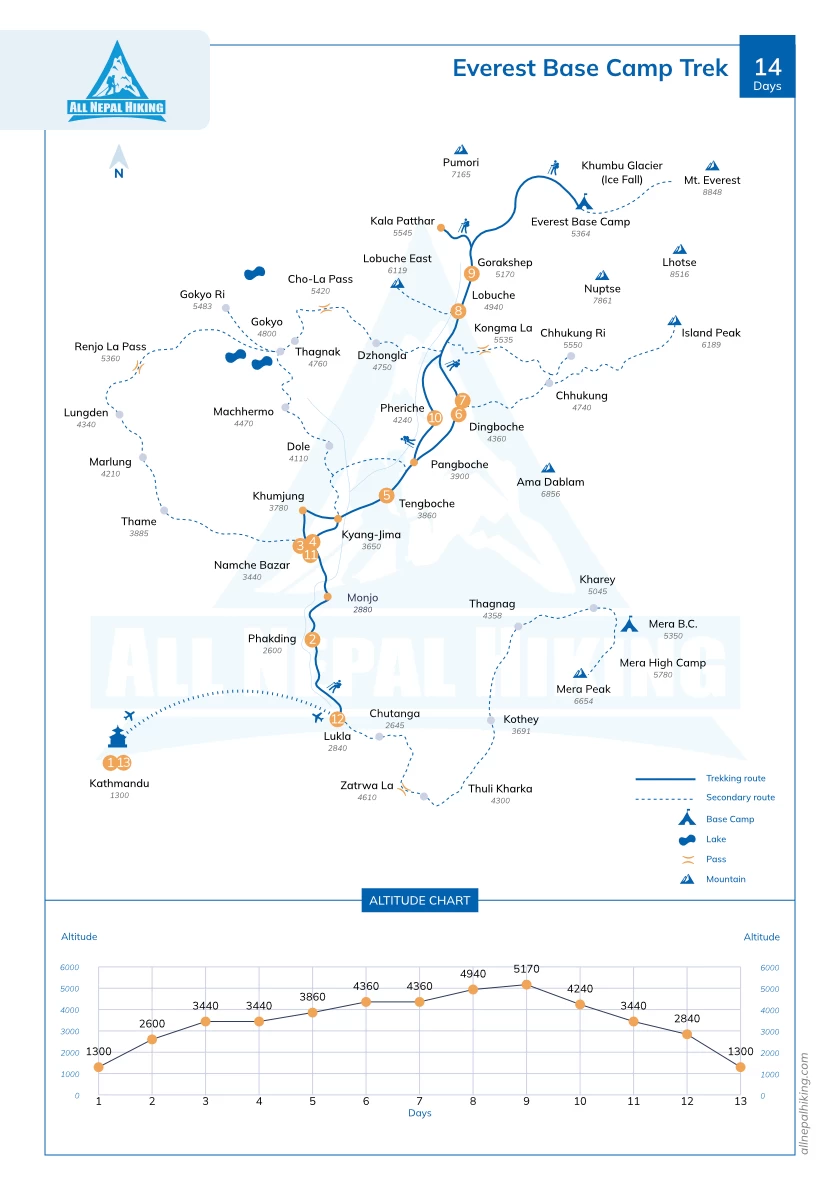
Annapurna Circuit Trek
The Annapurna Circuit Trek is one of Nepal’s most beloved and diverse trekking adventures, offering an unforgettable journey through dramatic landscapes, shifting climate zones, and ancient Himalayan cultures. Unlike more linear routes, this classic trek takes you in a loop around the Annapurna massif, showcasing the stunning geographical contrasts and cultural richness of central Nepal.
Starting from the lowland villages of Besisahar or Chame, the trail ascends gradually through subtropical forests, rice terraces, and river valleys, then climbs into alpine meadows and finally to the windswept, arid terrain of the Trans-Himalayan region. With each step, the scenery changes dramatically, offering breathtaking views of iconic Himalayan peaks such as Annapurna I (8,091 m), Dhaulagiri (8,167 m), Machapuchare (Fishtail Mountain), Manaslu, and Tilicho Peak.
Trekking Highlight: Thorong La Pass
The crown jewel of the Annapurna Circuit is the Thorong La Pass (5,416 m) one of the highest trekking passes in the world. Crossing this pass is a physically demanding yet deeply rewarding experience, offering panoramic views across the Mustang and Manang valleys and beyond. It’s the moment that marks your transition from lush eastern valleys into the high-altitude desert of Lower Mustang, reminiscent of Tibetan plateaus.
Cultural Encounters
What truly sets the Annapurna Circuit apart is the incredible ethnic diversity you’ll encounter along the way. From the Gurungs and Magars of the lower hills to the Tibetan-influenced Manangis and Thakalis of the higher valleys, each community offers unique traditions, architecture, languages, and food.
The trail takes you through charming villages like:
- Chame and Pisang with their prayer wheels and mani walls
- Manang, a major acclimatization stop filled with ancient monasteries and dramatic mountain backdrops
- Muktinath, a sacred pilgrimage site for both Hindus and Buddhists
- Marpha, famous for its whitewashed buildings and apple orchards
Trek Facts:
- Duration: 15–20 days (depending on route and side trips)
- Max Altitude: Thorong La Pass (5,416 m)
- Difficulty: Moderate to Challenging
- Trek Type: Tea house trek
- Required Permits: Annapurna Conservation Area Permit (ACAP) & TIMS Card
Highlights:
- Crossing Thorong La Pass, one of the world’s highest trekking passes
- Varied landscapes: from lush jungles to glacial valleys to arid plateaus
- Rich cultural experience across different ethnic communities
- Side trips to Tilicho Lake (4,919 m), one of the highest lakes on earth
- Sacred visit to Muktinath Temple, where fire, water, and earth meet
- Optional descent through the Kali Gandaki Gorge, the world’s deepest gorge
Best Time to Trek:
- Autumn (Sept–Nov): Ideal weather, stable conditions, clear skies
- Spring (Mar–May): Rhododendron blooms, moderate temperatures
Trekking Tips:
- Most trekkers go counterclockwise to allow gradual acclimatization before crossing Thorong La
- Hiring a local guide and porter is recommended, especially for the high pass
- Be prepared for temperature extremes, from hot valleys to snow-covered passes
Whether you’re chasing panoramic mountain vistas, connecting with remote cultures, or seeking the thrill of high-altitude adventure, the AC Trek is a perfect blend of natural beauty and cultural immersion making it one of the top trekking experiences not just in Nepal, but in the entire world.
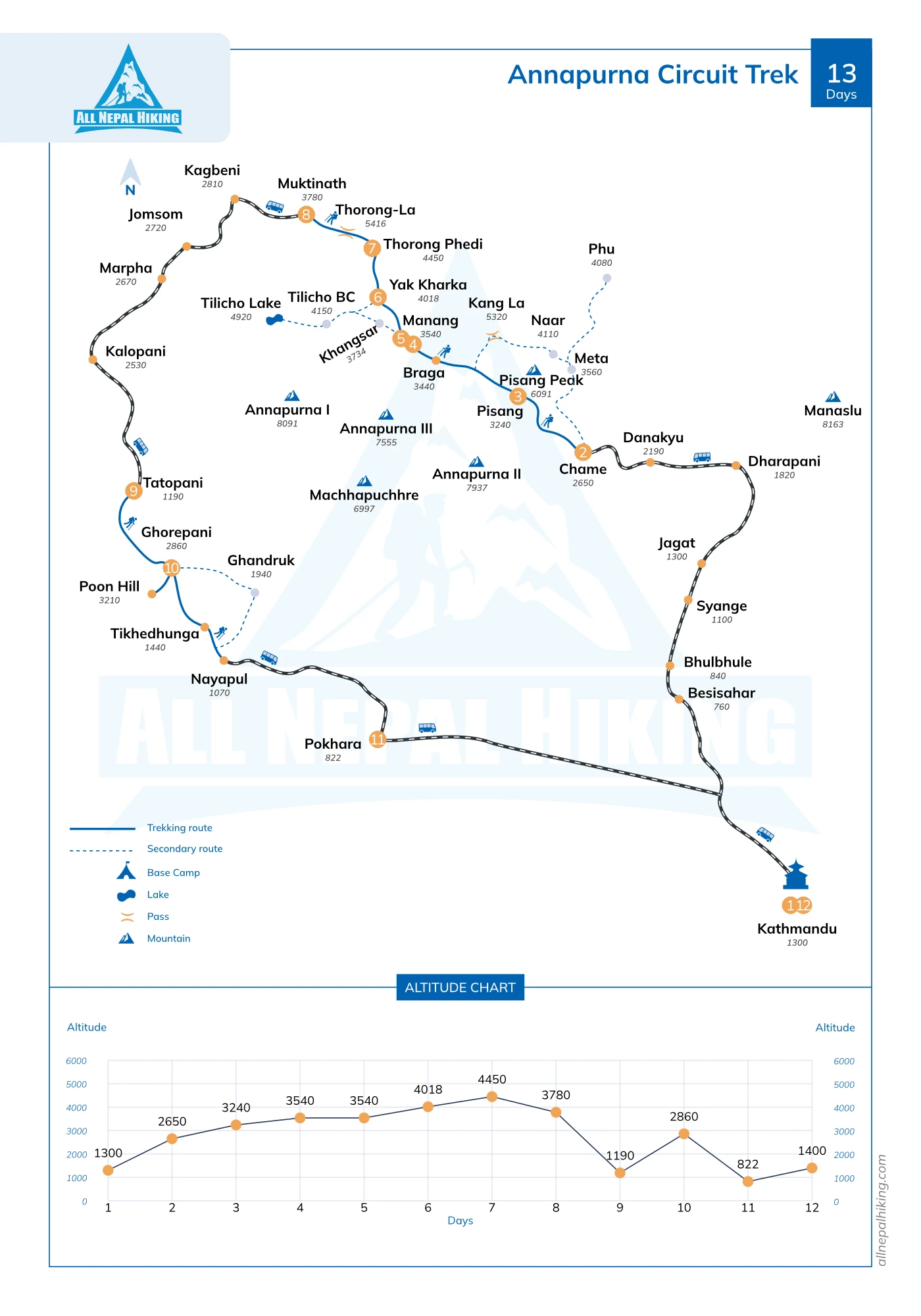
Langtang Valley Trek: A Serene Journey Close to Kathmandu
The Langtang Valley Trek is one of Nepal’s most underrated yet rewarding hikes. Located just a 6–7 hour drive from Kathmandu, it’s an excellent choice for trekkers seeking a shorter Himalayan adventure that doesn’t compromise on natural beauty or cultural richness. Often referred to as the "Valley of Glaciers," Langtang offers a quieter alternative to the busier Everest and Annapurna regions, while still delivering awe-inspiring mountain views and authentic local experiences.
What to Expect on the Trail
The journey begins in Syabrubesi, a small town in the Rasuwa district, from where the trail gradually ascends through rhododendron forests, cascading waterfalls, and charming Tamang and Tibetan-influenced villages like Lama Hotel, Langtang Village, and Kyanjin Gompa.
As you gain altitude, the dense forests open into expansive alpine meadows and glacial valleys. The highlight is Kyanjin Gompa (3,870 m) , a sacred Buddhist monastery nestled beneath towering peaks. From here, trekkers can take an optional day hike to Kyanjin Ri (4,773 m) or Tserko Ri (4,984 m) for breathtaking panoramic views of Langtang Lirung, Dorje Lakpa, and other snow-capped Himalayan giants.
Nature and Wildlife in Langtang National Park
The trail runs through the heart of Langtang National Park, Nepal’s first Himalayan national park. This protected area is a biodiversity hotspot, home to rare species such as the elusive red panda, Himalayan black bear, musk deer, and over 250 species of birds. The variety of vegetation—from subtropical forests to high-altitude shrubs makes the trek a botanical delight, especially during spring when rhododendrons bloom in vibrant colors.
Cultural Encounters
Langtang is culturally rich, with its inhabitants being predominantly of Tamang and Tibetan descent. Their unique customs, dialects, and religious practices offer an intimate look into Himalayan life. Trekkers often visit local cheese factories, explore centuries-old monasteries, and enjoy warm hospitality in family-run teahouses.
Notably, the Langtang region was heavily impacted by the 2015 earthquake, but the trail and infrastructure have since been rebuilt with resilient community efforts. Trekking here not only provides an unforgettable experience but also supports the local economy and recovery.
Trek Facts:
- Duration: 7–10 days
- Max Altitude: Tserko Ri (4,984 m)
- Difficulty: Moderate
- Trek Type: Tea house trek
- Permits Required: Langtang National Park Permit & TIMS card
Highlights:
- Close proximity to Kathmandu—no need for flights
- Dramatic views of Langtang Lirung (7,234 m) and surrounding peaks
- Visit to Kyanjin Gompa, a remote Buddhist monastery
- Optional hikes to Kyanjin Ri or Tserko Ri for panoramic vistas
- Rich Tamang culture and traditional villages
- Explore Langtang National Park with chances to spot rare wildlife
Best Time to Trek:
- Spring (March–May): Ideal weather, wildflower blooms
- Autumn (Sept–Nov): Clear skies and crisp mountain views
Trekking Tips:
- Altitude is manageable, but acclimatization is still key—consider a rest day in Kyanjin
- The trail is less crowded, offering a peaceful trekking experience
- Combine with Gosaikunda Lake Trek or Helambu Trek for an extended route
If you're looking for a short, scenic, and culturally rich trek near Kathmandu, the Langtang Valley Trek is a perfect match. It’s ideal for trekkers who want to experience the Himalayas off the beaten path, with all the rewards of alpine scenery, sacred sites, and local traditions without the crowds or the need for domestic flights.
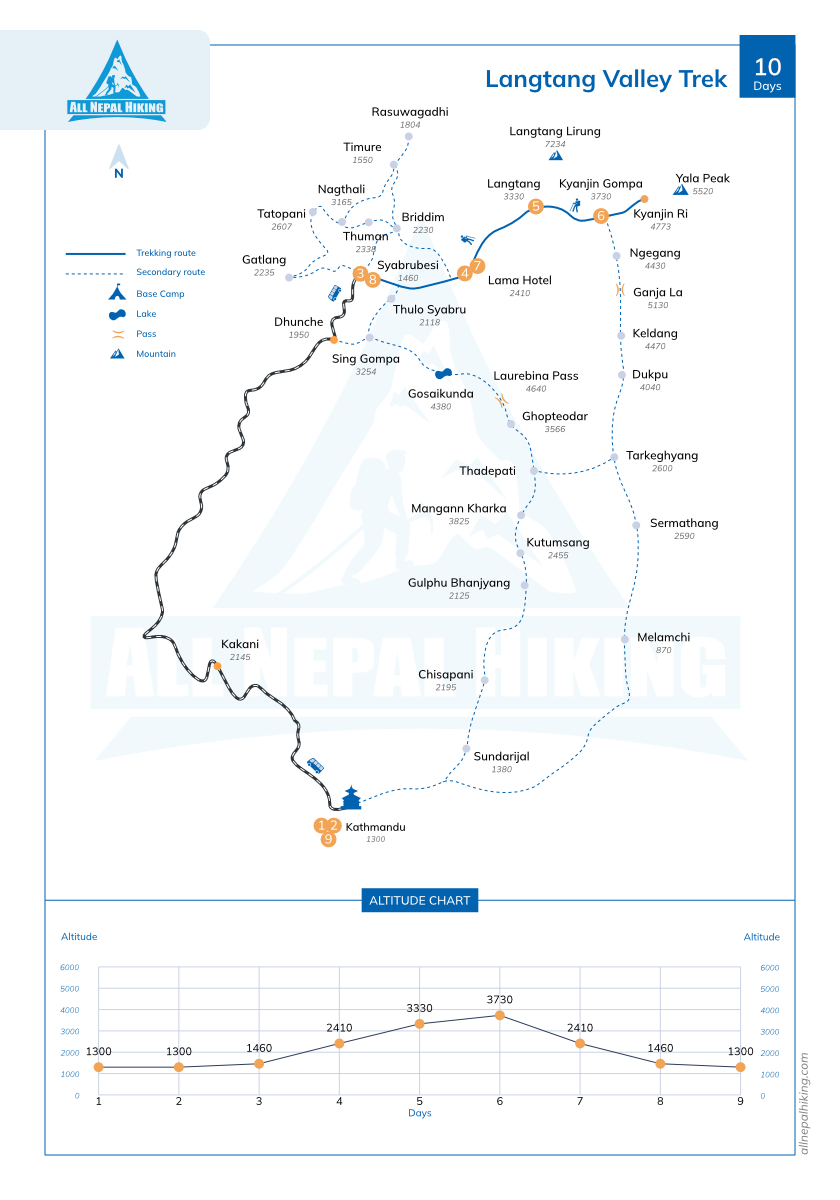
Manaslu Circuit Trek
The Manaslu Circuit Trek is often described as Nepal’s hidden gem, offering one of the most authentic and adventurous trekking experiences in the Himalayas. Circling Mount Manaslu (8,163 m) the world’s eighth-highest mountain, this trek takes you through some of the country’s most untouched wilderness, combining raw natural beauty with deep Tibetan Buddhist traditions.
Unlike the busier Everest or Annapurna regions, the Manaslu region remains relatively remote and less commercialized. This makes it an excellent choice for trekkers seeking solitude, serenity, and a more off-the-beaten-path adventure in Nepal.
What Makes the Manaslu Circuit Special?
The journey begins in Soti Khola and gradually climbs through lush subtropical forests, river valleys, and alpine meadows, eventually leading to the majestic Larkya La Pass (5,160 m) a challenging yet unforgettable high-altitude crossing.
This trek offers dramatic contrasts in landscape: from terraced rice fields and cascading waterfalls in the lower regions to barren glaciers, snow-capped peaks, and rocky trails at higher altitudes. You’ll also be rewarded with panoramic views of Himalchuli, Ganesh Himal, Cheo Himal, and of course, Mount Manaslu itself.
Rich Cultural Encounters
Culturally, the Manaslu region is just as fascinating. As you trek higher, the trail enters Tibetan-influenced villages like Sama Gaun and Samdo, where centuries-old Buddhist traditions are still practiced. Trekkers can explore mani walls, chortens, and Gompas (monasteries) with the locals speaking dialects closer to Tibetan than Nepali.
The trail closely borders Tibet, and many of the communities you’ll encounter are descendants of Tibetan migrants. This makes the trek feel like a journey through a hidden Himalayan kingdom, where ancient customs are preserved far from the influence of modern life.
Larkya La Pass: The High Point of the Trek
The most physically demanding and rewarding part of the Manaslu Circuit is the crossing of Larkya La Pass, which lies at 5,160 meters (16,929 feet). The ascent requires early morning trekking and good weather conditions, but the view from the top is nothing short of spectacular offering sweeping views of Manaslu, Himlung Himal, Kang Guru, and Annapurna II.
Trek Facts:
Duration: 14–16 days
Max Altitude: Larkya La Pass (5,160 m)
Difficulty: Strenuous
Trek Type: Tea house trek (basic facilities in remote areas)
Permit Requirements:
- Manaslu Restricted Area Permit
- Manaslu Conservation Area Permit (MCAP)
- Annapurna Conservation Area Permit (ACAP)
- Minimum 2 trekkers with a registered guide
Highlights:
- Spectacular views of Mount Manaslu (8,163 m)
- Remote, crowd-free trails and untouched wilderness
- Crossing the dramatic Larkya La Pass
- Insight into authentic Tibetan Buddhist culture
- Wildlife sightings including blue sheep, Himalayan marmots, and possibly snow leopards
- Combine with Tsum Valley for a longer spiritual extension
Best Time to Trek:
- Autumn (Sept–Nov): Clear skies, dry trails, and excellent visibility
- Spring (Mar–May): Warmer temperatures, blooming rhododendrons
Trekking Tips:
- Due to its remote nature, prepare for longer walking days and fewer luxury accommodations
- Ensure you trek with a registered guide and travel in a group (mandatory for permit issuance)
- Acclimatize properly to prevent altitude sickness—consider extra nights in Sama Gaun or Samdo
- Bring sufficient cash—no ATMs are available along the route
If you’re seeking a wilder, less-traveled trekking experience in Nepal that still delivers world-class mountain views and deep cultural immersion, the Manaslu Circuit Trek is a top contender. It’s perfect for seasoned trekkers looking to escape the crowds and explore Nepal’s hidden Himalayan frontiers.
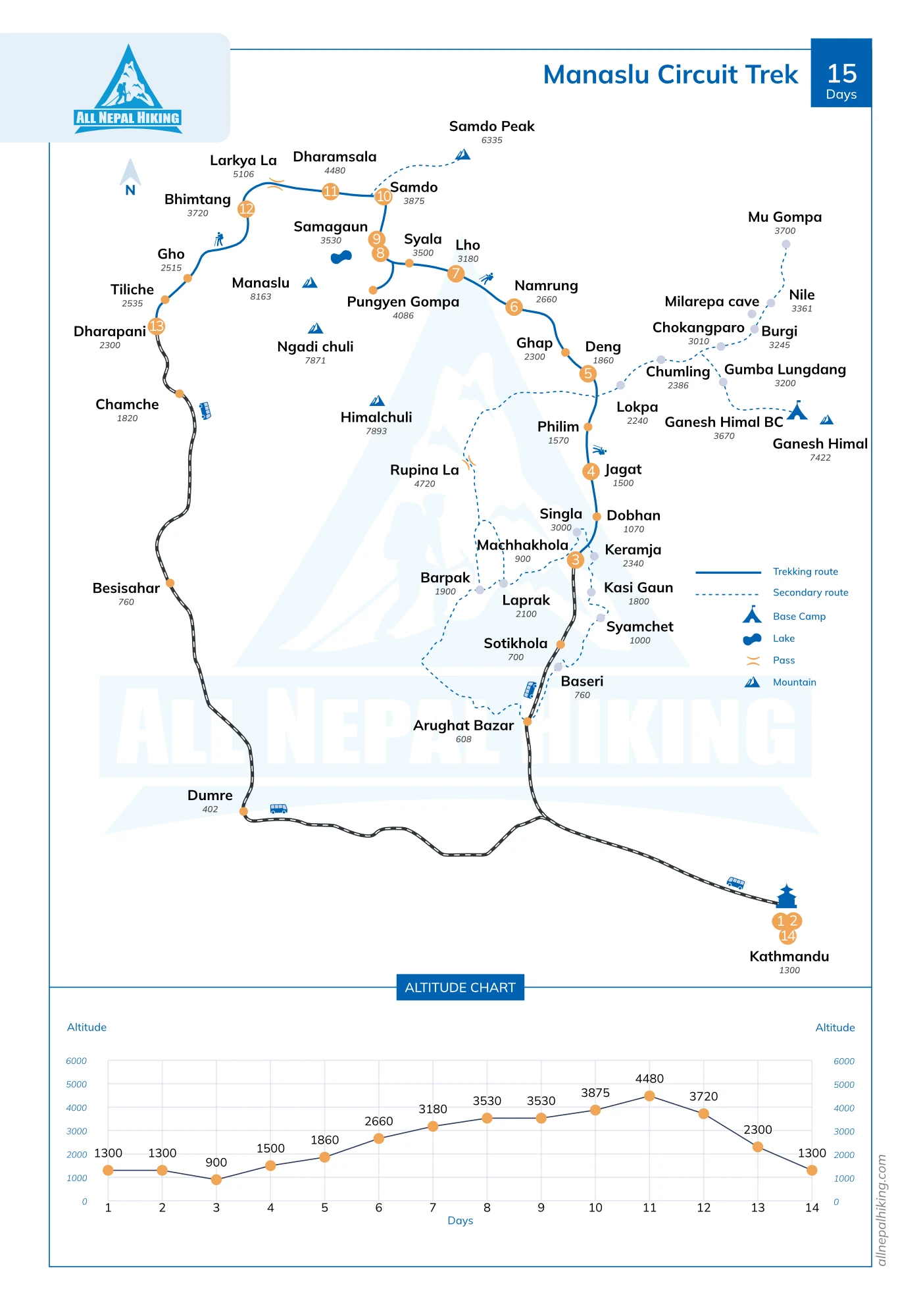
Annapurna Base Camp Trek
The Annapurna Base Camp (ABC) Trek is one of Nepal’s most beloved and accessible treks offering a close-up encounter with the Himalayan giants in a relatively short duration. Perfect for those with limited time, this trail delivers a rich blend of natural beauty, cultural heritage, and alpine adventure, all within a manageable 7 to 10-day itinerary.
A Scenic and Culturally Immersive Trail
The trek begins from Pokhara, a scenic lakeside city that acts as the gateway to the Annapurna region. From here, the trail winds through lush rhododendron and bamboo forests, terraced rice paddies, and quaint Gurung and Magar villages such as Ghandruk and Chhomrong. These traditional settlements offer more than just rest stops they provide authentic glimpses into the local way of life, with warm hospitality and delicious home-cooked meals.
As you climb higher into the Modi Khola valley, the terrain transforms into rugged alpine landscapes, surrounded by glaciated peaks and soaring cliffs. One of the trek’s most enchanting features is the continuous presence of Machapuchare (Fishtail Mountain) a sacred, unclimbed peak that dominates the skyline with its dramatic double summit.
The Grand Finale: Annapurna Base Camp
The ultimate destination Annapurna Base Camp (4,130 m) is a natural amphitheater encircled by towering mountains, including Annapurna I (8,091 m), Hiunchuli, Annapurna South, and Baraha Shikhar. Standing at the foot of these Himalayan giants is an awe-inspiring moment, especially during sunrise when the golden light illuminates the snow-covered peaks.
Unlike more remote treks, the ABC route offers a relatively lower maximum altitude, making it more suitable for beginners or those concerned about high-altitude sickness, while still delivering world-class mountain views.
Trek Facts:
- Duration: 7–10 days (depending on route and pace)
- Max Altitude: 4,130 m (Annapurna Base Camp)
- Difficulty: Moderate
- Start/End Point: Nayapul or Jhinu Danda (accessible from Pokhara)
- Trek Type: Tea house trek
- Permit Requirements:Annapurna Conservation Area Permit (ACAP) ,TIMS (Trekkers’ Information Management System)
Highlights:
- Panoramic views of Annapurna I, Machapuchare, Hiunchuli, and more
- Immersive cultural experiences in Gurung villages
- Stunning sunrise and sunset views from the base camp
- Relaxing natural hot springs at Jhinu Danda on the return journey
- Easily combined with short treks like Poon Hill for additional vistas
Best Time to Trek:
- Spring (Mar–May): Rhododendrons in bloom and clear mountain views
- Autumn (Sept–Nov): Crisp air, clear skies, and perfect trekking conditions
Trekking Tips:
- Be prepared for rapid weather changes in the Annapurna Sanctuary
- Stay hydrated and ascend gradually to reduce the risk of altitude sickness
- Layered clothing is essential due to varying temperatures throughout the day
- Bring cash for meals, accommodations, and extras, as ATMs are not available on the trail
Whether you're a novice trekker seeking your first Himalayan adventure or an experienced hiker with limited time, the Annapurna Base Camp Trek offers a perfect balance of challenge, comfort, and reward, culminating in one of the most iconic mountain vistas in Nepal.
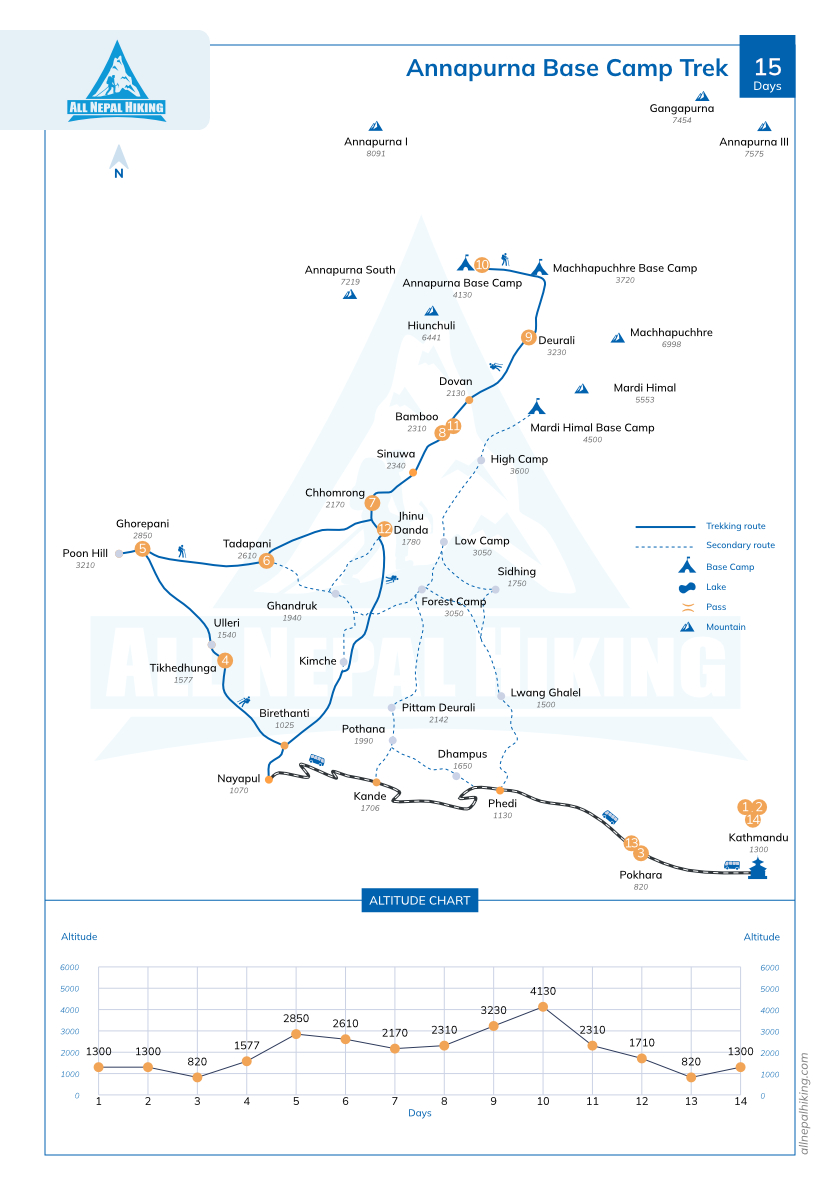
Why Trekking in Nepal is a Life-Changing Experience
Beyond the awe-inspiring landscapes and physical challenge, trekking in Nepal offers a deep cultural immersion. You’ll meet hospitable locals, explore centuries-old monasteries, and witness vibrant festivals and traditions. The trails wind through diverse ecosystems, from subtropical forests to high alpine deserts, offering a spectacular variety of wildlife and plant life.
Whether you are drawn by the allure of Everest, the cultural richness of the Annapurna region, or the remoteness of Manaslu, Nepal’s trekking routes provide an unmatched adventure for the mind, body, and soul. So lace up your boots, pack your backpack, and get ready to explore the roof of the world Nepal awaits!
Why Nepal is the Ultimate Trekking Destination
Nepal is often hailed as the trekking capital of the world, and for good reason. This Himalayan kingdom is home to some of the most breathtaking and diverse trekking routes on the planet, attracting adventure seekers, nature lovers, and cultural enthusiasts from across the globe. Trekking in Nepal offers a unique blend of awe-inspiring mountain landscapes, vibrant local cultures, and unparalleled opportunities for outdoor adventure.
The country’s geography is dominated by the mighty Himalayas, including eight of the world’s fourteen highest peaks, such as Mount Everest (8,848m) and Annapurna (8,091m). This dramatic terrain creates trekking routes that range from gentle hikes through lush valleys and terraced farmlands to challenging high-altitude expeditions across snow-capped mountain passes. Whether you are looking for a short trek with comfortable tea house lodges or a multi-week expedition in remote wilderness, Nepal’s trails offer something for every level of trekker.
Culturally, Nepal is a mosaic of ethnic groups including Sherpas, Gurungs, Tamangs, and Thakalis, each with their own distinct traditions, languages, and festivals. Trekking through villages and settlements provides an immersive experience into Himalayan culture, where ancient Buddhist monasteries, prayer flags fluttering in the wind, and warm local hospitality create memories that last a lifetime.
The trekking infrastructure in Nepal is well-developed, with thousands of kilometers of marked trails and numerous tea houses providing food and lodging along popular routes. This accessibility makes trekking in Nepal a safe and comfortable experience for both beginners and seasoned hikers. Popular trekking areas such as the Everest region, Annapurna massif, Langtang Valley, and Manaslu Circuit are also supported by local guides and porters who enrich the journey with their knowledge and stories.
Moreover, trekking in Nepal is not only an adventure but also an opportunity for personal growth. The physical demands of high-altitude hiking build endurance and resilience, while the serene natural environment promotes mindfulness and connection to nature. The challenge of overcoming tough trails rewards trekkers with breathtaking vistas and a profound sense of achievement.
In summary, Nepal’s trekking trails offer an unmatched combination of natural beauty, cultural richness, and adventure. From iconic routes like the Everest Base Camp and Annapurna Circuit to hidden gems like the Manaslu Circuit and Langtang Valley, Nepal remains a dream destination for trekkers worldwide. Whether you’re chasing panoramic Himalayan views, seeking spiritual encounters, or simply wanting to disconnect and explore nature’s grandeur, Nepal promises an extraordinary trekking experience that you will cherish forever.
Conclusion
Nepal is undeniably one of the world’s premier trekking destinations, offering a diverse range of trails that showcase the breathtaking beauty of the Himalayas alongside rich cultural experiences. From the iconic Everest Base Camp to the remote and serene Manaslu Circuit, each trek provides a unique journey filled with stunning landscapes, vibrant local traditions, and moments of personal challenge and triumph.
Whether you seek the adrenaline rush of crossing high mountain passes, the warmth of welcoming mountain communities, or the peaceful solitude of pristine wilderness, Nepal’s top hikes cater to every type of adventurer. The Annapurna Circuit and Annapurna Base Camp treks impress with their diverse terrains and panoramic mountain views, while the Langtang Valley offers a closer glimpse of Himalayan wildlife and culture near Kathmandu.
By choosing any of these five best hikes, you’re not only stepping into a world of natural grandeur but also embracing a transformational journey that will stay with you long after the trek ends. Prepare to be inspired, challenged, and humbled by Nepal’s majestic mountains and the resilient spirit of its people.
So pack your backpack, lace up your trekking boots, and get ready to explore Nepal’s extraordinary trails your Himalayan adventure awaits
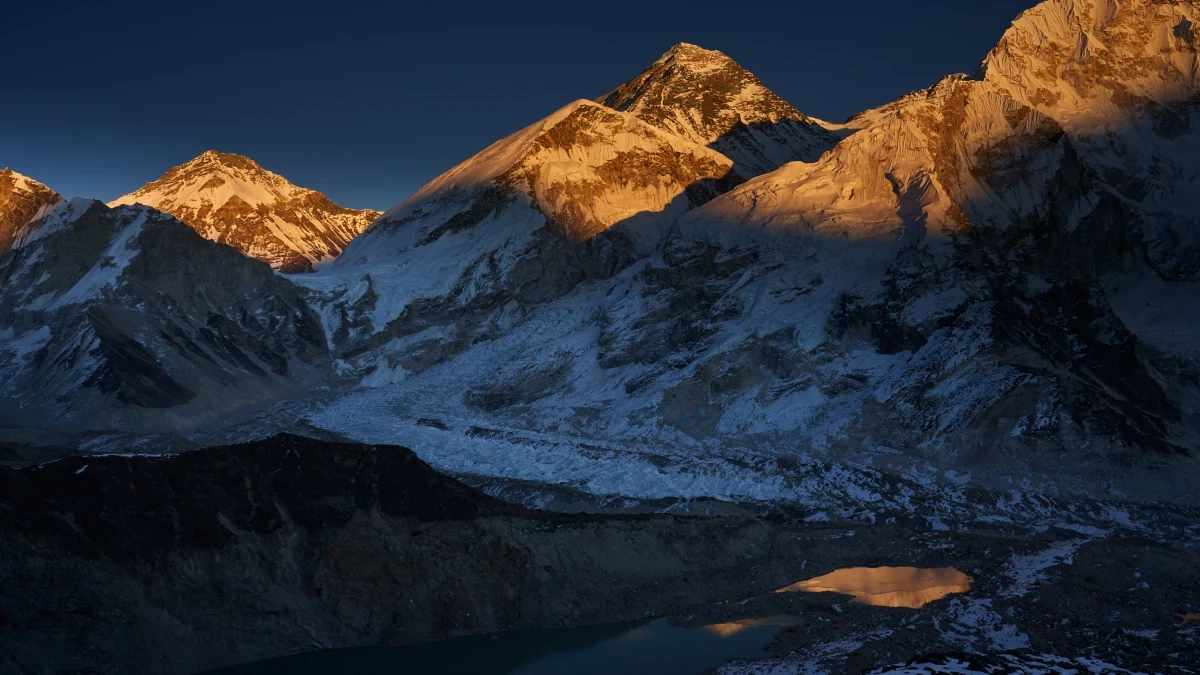





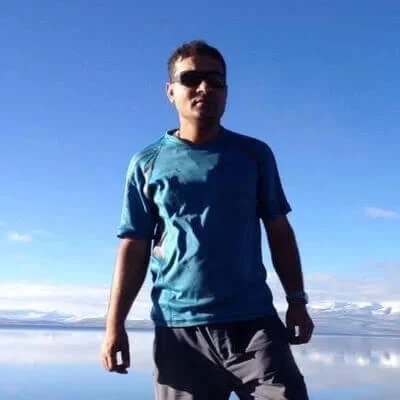
.webp)
